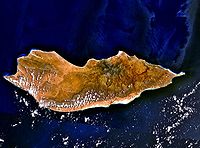
Photo from wikipedia
Compared to other regions, the drivers of diversification in Africa are poorly understood. We studied a radiation of insects with over 100 species occurring in a wide range of habitats… Click to show full abstract
Compared to other regions, the drivers of diversification in Africa are poorly understood. We studied a radiation of insects with over 100 species occurring in a wide range of habitats across the Afrotropics to investigate the fundamental evolutionary processes and geological events that generate and maintain patterns of species richness on the continent. By investigating the evolutionary history of Bicyclus butterflies within a phylogenetic framework, we inferred the group's origin at the Oligo-Miocene boundary from ancestors in the Congolian rainforests of central Africa. Abrupt climatic fluctuations during the Miocene (ca. 19-17 Ma) likely fragmented ancestral populations, resulting in at least eight early-divergent lineages. Only one of these lineages appears to have diversified during the drastic climate and biome changes of the early Miocene, radiating into the largest group of extant species. The other seven lineages diversified in forest ecosystems during the late Miocene and Pleistocene when climatic conditions were more favourable-warmer and wetter. Our results suggest changing Neogene climate, uplift of eastern African orogens, and biotic interactions might have had different effects on the various subclades of Bicyclus, producing one of the most spectacular butterfly radiations in Africa.
Journal Title: Systematic biology
Year Published: 2021
Link to full text (if available)
Share on Social Media: Sign Up to like & get
recommendations!